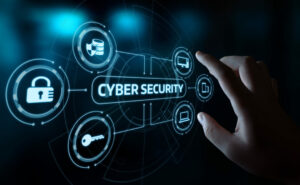In the event of a disaster, every second counts. Lives are at stake and quick, efficient action can make all the difference in saving them. That’s where VBRN tech comes into play. With its cutting-edge technology and innovative approaches, it is revolutionizing disaster response efforts around the world. In this blog post, we’ll explore how VBRN tech works and why it’s quickly becoming an essential tool for emergency responders everywhere. So buckle up and get ready to discover what makes this game-changing technology such a crucial asset in times of crisis!
Introduction to VBRN Tech
VBRN tech is a cutting-edge technology that is revolutionizing disaster response efforts. It is a versatile tool that can be used in a variety of ways to help first responders and relief workers alike. Here are just a few of the ways that VBRN tech is making a difference:
- Communicating in real-time: VBRN tech allows for instant communication between first responders and relief workers. This means that information can be shared quickly and efficiently, allowing for a coordinated response to any situation.
- Tracking resources: VBRN tech can be used to track resources, such as water or food supplies. This information can then be used to ensure that everyone has what they need during and after a disaster.
- Planning evacuation routes: VBRN tech can be used to plan evacuation routes and identify safe areas. This information can prove invaluable in ensuring the safety of those affected by a disaster.
- Helping with search and rescue efforts: VBRN tech can be used to locate people who are lost or trapped following a disaster. This information can then be used to coordinate search and rescue efforts, helping to save lives.
Benefits of VBRN Technology
When it comes to disaster response, time is of the essence. That’s where VBRN technology comes in. VBRN (short for “Virtual Base Response Network”) is a new type of technology that enables first responders to rapidly connect with each other and share information in real-time, regardless of location. This can help save lives by allowing responders to coordinate their efforts more effectively and get critical information to those who need it most quickly.
In addition to improving coordination and communication, VBRN technology can also help reduce the overall cost of disaster response efforts. By allowing responders to quickly share information and resources, VBRN can help avoid duplication of effort and wasted resources.
Perhaps most importantly, VBRN technology has the potential to save lives by helping first responders respond more quickly and effectively to emergencies. In a world where every second counts, that’s an invaluable benefit.
How VBRN Technology is Revolutionizing Disaster Response Efforts
In the past, disaster response efforts have been limited by the ability to quickly and effectively communicate with first responders. With the advent of VBRN technology, communication is no longer a barrier to effective disaster response.
VBRN technology enables first responders to quickly and easily connect with one another, as well as with other emergency personnel and resources. This allows for a more coordinated and efficient response to disasters. Additionally, VBRN technology can be used to provide real-time information about the status of a disaster area, which can help responders make better decisions about how to best allocate resources.
The use of VBRN technology is already making a difference in the way disasters are being handled. In 2017, Hurricane Harvey caused $125 billion in damage and left thousands of people displaced. The use of VBRN tech helped emergency personnel coordinate their efforts and respond more effectively to the needs of those affected by the hurricane.
As VBRN technology continues to evolve, it is likely that its impact on disaster response will only grow. This technology has the potential to revolutionize how we respond to disasters, making our responses more coordinated, efficient, and effective.
Examples of VBRN Technology in Use
VBRN technology is being used in a variety of ways to revolutionize disaster response efforts. One example is the use of VBRN drones to survey damage and deliver aid after a natural disaster. Another example is the use of VBRN technology to create virtual reality simulations of disasters to help first responders prepare for real-world events. Additionally, VBRN tech is being used to develop new early warning systems that can alert people in the path of a disaster before it strikes.
Challenges Faced by Implementing VBRN Tech
When it comes to disaster response, one of the biggest challenges is getting the right information to the right people at the right time. With so many moving parts and so much happening all at once, it can be difficult to ensure that everyone has the most up-to-date information. This is where VBRN tech comes in.
VBRN tech stands for “voice, broadband, and radio network” technology. It’s a new way of communication that allows first responders to share information more quickly and efficiently. By using VBRN tech, first responders can connect with each other and with other agencies more quickly and easily, which means that they can get the information they need faster.
However, implementing VBRN tech can be challenging. First, there’s the issue of cost. VBRN tech requires special equipment that can be expensive to purchase and maintain. Additionally, there’s the issue of training. First responders need to be trained on how to use the new technology before they can put it into action during a disaster.
Despite these challenges, VBRN tech is revolutionizing disaster response efforts. It’s helping first responders communicate better and faster, which means that they can provide better assistance to those who need it most during a crisis.
Conclusion
VBRN technology is revolutionizing the way disaster response efforts are carried out. This affordable and reliable tool provides real-time data that can help responders better locate victims, provide more efficient aid, and quickly assess damage to affected areas. By utilizing this innovative technology, we can ensure that disaster relief efforts are conducted in the most effective manner possible – saving time and lives.










